HSBC 2001 Annual Report Download - page 268
Download and view the complete annual report
Please find page 268 of the 2001 HSBC annual report below. You can navigate through the pages in the report by either clicking on the pages listed below, or by using the keyword search tool below to find specific information within the annual report.-
 1
1 -
 2
2 -
 3
3 -
 4
4 -
 5
5 -
 6
6 -
 7
7 -
 8
8 -
 9
9 -
 10
10 -
 11
11 -
 12
12 -
 13
13 -
 14
14 -
 15
15 -
 16
16 -
 17
17 -
 18
18 -
 19
19 -
 20
20 -
 21
21 -
 22
22 -
 23
23 -
 24
24 -
 25
25 -
 26
26 -
 27
27 -
 28
28 -
 29
29 -
 30
30 -
 31
31 -
 32
32 -
 33
33 -
 34
34 -
 35
35 -
 36
36 -
 37
37 -
 38
38 -
 39
39 -
 40
40 -
 41
41 -
 42
42 -
 43
43 -
 44
44 -
 45
45 -
 46
46 -
 47
47 -
 48
48 -
 49
49 -
 50
50 -
 51
51 -
 52
52 -
 53
53 -
 54
54 -
 55
55 -
 56
56 -
 57
57 -
 58
58 -
 59
59 -
 60
60 -
 61
61 -
 62
62 -
 63
63 -
 64
64 -
 65
65 -
 66
66 -
 67
67 -
 68
68 -
 69
69 -
 70
70 -
 71
71 -
 72
72 -
 73
73 -
 74
74 -
 75
75 -
 76
76 -
 77
77 -
 78
78 -
 79
79 -
 80
80 -
 81
81 -
 82
82 -
 83
83 -
 84
84 -
 85
85 -
 86
86 -
 87
87 -
 88
88 -
 89
89 -
 90
90 -
 91
91 -
 92
92 -
 93
93 -
 94
94 -
 95
95 -
 96
96 -
 97
97 -
 98
98 -
 99
99 -
 100
100 -
 101
101 -
 102
102 -
 103
103 -
 104
104 -
 105
105 -
 106
106 -
 107
107 -
 108
108 -
 109
109 -
 110
110 -
 111
111 -
 112
112 -
 113
113 -
 114
114 -
 115
115 -
 116
116 -
 117
117 -
 118
118 -
 119
119 -
 120
120 -
 121
121 -
 122
122 -
 123
123 -
 124
124 -
 125
125 -
 126
126 -
 127
127 -
 128
128 -
 129
129 -
 130
130 -
 131
131 -
 132
132 -
 133
133 -
 134
134 -
 135
135 -
 136
136 -
 137
137 -
 138
138 -
 139
139 -
 140
140 -
 141
141 -
 142
142 -
 143
143 -
 144
144 -
 145
145 -
 146
146 -
 147
147 -
 148
148 -
 149
149 -
 150
150 -
 151
151 -
 152
152 -
 153
153 -
 154
154 -
 155
155 -
 156
156 -
 157
157 -
 158
158 -
 159
159 -
 160
160 -
 161
161 -
 162
162 -
 163
163 -
 164
164 -
 165
165 -
 166
166 -
 167
167 -
 168
168 -
 169
169 -
 170
170 -
 171
171 -
 172
172 -
 173
173 -
 174
174 -
 175
175 -
 176
176 -
 177
177 -
 178
178 -
 179
179 -
 180
180 -
 181
181 -
 182
182 -
 183
183 -
 184
184 -
 185
185 -
 186
186 -
 187
187 -
 188
188 -
 189
189 -
 190
190 -
 191
191 -
 192
192 -
 193
193 -
 194
194 -
 195
195 -
 196
196 -
 197
197 -
 198
198 -
 199
199 -
 200
200 -
 201
201 -
 202
202 -
 203
203 -
 204
204 -
 205
205 -
 206
206 -
 207
207 -
 208
208 -
 209
209 -
 210
210 -
 211
211 -
 212
212 -
 213
213 -
 214
214 -
 215
215 -
 216
216 -
 217
217 -
 218
218 -
 219
219 -
 220
220 -
 221
221 -
 222
222 -
 223
223 -
 224
224 -
 225
225 -
 226
226 -
 227
227 -
 228
228 -
 229
229 -
 230
230 -
 231
231 -
 232
232 -
 233
233 -
 234
234 -
 235
235 -
 236
236 -
 237
237 -
 238
238 -
 239
239 -
 240
240 -
 241
241 -
 242
242 -
 243
243 -
 244
244 -
 245
245 -
 246
246 -
 247
247 -
 248
248 -
 249
249 -
 250
250 -
 251
251 -
 252
252 -
 253
253 -
 254
254 -
 255
255 -
 256
256 -
 257
257 -
 258
258 -
 259
259 -
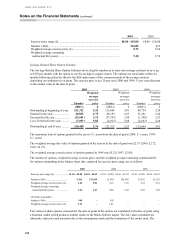 260
260 -
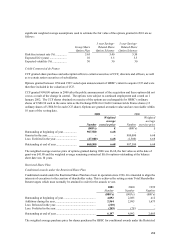 261
261 -
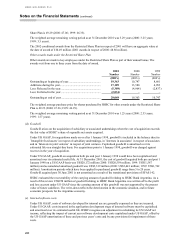 262
262 -
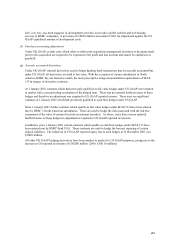 263
263 -
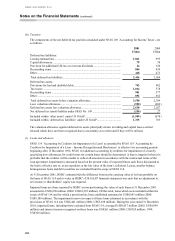 264
264 -
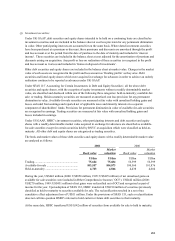 265
265 -
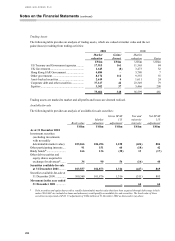 266
266 -
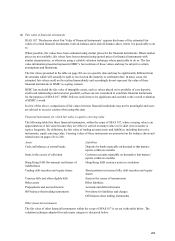 267
267 -
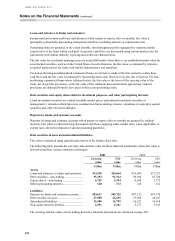 268
268 -
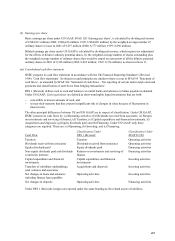 269
269 -
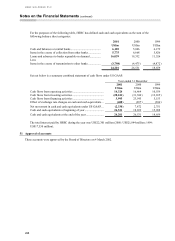 270
270 -
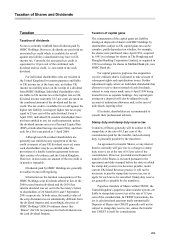 271
271 -
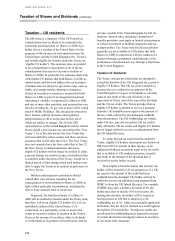 272
272 -
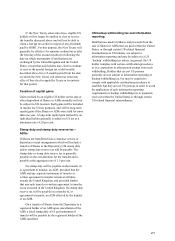 273
273 -
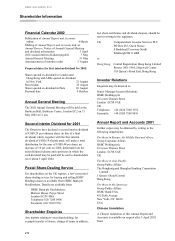 274
274 -
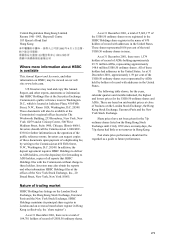 275
275 -
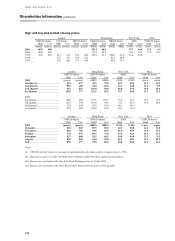 276
276 -
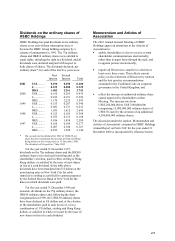 277
277 -
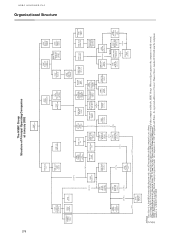 278
278 -
 279
279 -
 280
280 -
 281
281 -
 282
282 -
 283
283 -
 284
284
 |
 |

HSBC HOLDINGS PLC
Notes on the Financial Statements (continued)
266
Loans and advances to banks and customers
For personal and commercial loans and advances which mature or reprice after six months, fair value is
principally estimated by discounting anticipated cash flows (including interests at contractual rates).
Performing loans are grouped, to the extent possible, into homogenous pools segregated by maturity and the
coupon rates of the loans within each pool. In general, cash flows are discounted using current market rates for
instruments with similar maturity, repricing and credit risk characteristics.
The fair value for residential mortgages may be treated differently where there is an established market value for
asset-backed securities, such as in the United States. In such situations, the fair value is estimated by reference
to quoted market prices for loans with similar characteristics and maturities.
For non-performing uncollateralised commercial loans, an estimate is made of the time period to realise these
cash flows and the fair value is estimated by discounting these cash flows at a risk-free rate of interest. For non-
performing commercial loans where collateral exists, the fair value is the lesser of the carrying value of the
loans, net of specific provisions, or the fair value of the collateral, discounted where appropriate. General
provisions are deducted from the fair values of these non-performing loans.
Debt securities and equity shares held for investment purposes, and other participating interests
Listed investment securities are valued at middle market prices and unlisted investment securities at
management’ s valuation which takes into consideration future earnings streams, valuations of equivalent quoted
securities and other relevant techniques.
Deposits by banks and customer accounts
Deposits by banks and customer accounts which mature or reprice after six months are grouped by residual
maturity. Fair value is estimated using discounted cash flows, applying either market rates, where applicable, or
current rates offered for deposits of similar remaining maturities.
Debt securities in issue and subordinated liabilities
Fair value is estimated using quoted market prices at the balance sheet date.
The following table presents the carrying value and fair value for those financial instruments whose fair value is
derived using these various estimation techniques:
2001 2000
Carrying
value Fair
value Carryin
g
value Fair
value
US$m US$m US$m US$m
Assets
Loans and advances to banks and customers .. 413,290 415,664 415,869 417,721
Debt securities – non-trading.......................... 93,293 94,314 86,954 87,744
Equity shares – non-trading ............................ 4,755 5,294 4,638 5,773
Other participating interests............................ 120 172 126 212
Liabilities
Deposits by banks and customer accounts...... 503,631 503,725 487,122 487,174
Debt securities in issue ................................... 27,098 26,635 27,956 28,107
Subordinated liabilities ................................... 15,480 15,799 16,222 16,168
Non-equity minority interests ......................... 4,291 4,221 5,171 5,535
The carrying and fair values of non-trading derivative financial instruments are disclosed on page 224.
